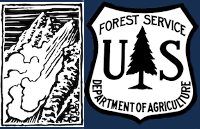This is Dave Zinn with the avalanche forecast for Tuesday, February 11th, at 7:00 a.m. sponsored by Uphill Pursuits and the Avalanche Alliance. This forecast does not apply to operating ski areas.
This morning, mountain temperatures are in the negative single digits to negative teens F, with light winds from the west and northwest. The mountains in Island Park got 2” of snow, with a trace to one inch elsewhere.
Today, high temperatures will be around 0 F, with 5-10 mph winds from the west through the north. Plan for a couple of cold days. The Arctic blast breaks on Thursday, and snow returns on Thursday night.
All Regions
Across the forecast area, human-triggered avalanches are possible on steep, wind-loaded slopes and where persistent weak layers formed in January result in lingering instability. It is reasonable to consider travel in some steeper terrain, but I offer two points:
- Temperatures are very cold. This increases the consequences of a simple mishap and a more serious avalanche incident for the affected individual and rescuers. Expand margins for error and select terrain with higher levels of certainty for positive outcomes.
- As instability becomes less widespread, the decision-making onus shifts to the backcountry travelers, who must make slope-scale stability assessments within the context of a regional avalanche forecast if you plan to travel in terrain steeper than 30 degrees. Check out the video Haylee and I made yesterday.
As you build your slope scale forecast, evaluate slopes for recent wind-loading where wind slab avalanches can break 1-2 feet deep. This weekend, natural and human-triggered avalanches breaking 20-200 feet wide occurred in all corners of the forecast area (Avalanche activity list). Several notable slides on Sunday included a pair of snowmobiler-triggered avalanches in the southern Madison Range (photos) and natural and snowboarder-triggered avalanches near Cooke City (photos, video). There will be minimal drifting today with light winds, so assess for instability with an extended column test and alert to shooting cracks, cornices and a hollow, drum-like feel to the snow surface.
Additionally, evaluate the snowpack for persistent weak layers buried 1-3 feet deep. We are not finding these on every slope, and we are getting mixed results in stability tests, but where they exist, persistent slab avalanches are possible (Lionhead observation, Cooke City observation, N. Madison Observation). Yesterday, collapsing and obvious signs of instability were absent as I traveled through a thin, weak snowpack in the Northern Madison Range. This means getting out your shovel and testing for instability because it probably won’t be noticeable otherwise.
Avoid steep, wind-loaded terrain where wind slab and larger persistent slab avalanches are most likely. Seek out terrain sheltered from the wind and with fewer terrain traps (trees, cliffs, rocks and gullies), and evaluate the snowpack for buried weak layers before committing to steep slopes. The avalanche danger is rated MODERATE.
Special note: A deeper-than-normal snowpack at lower elevations and on slopes that typically don’t hold much snow is exciting and offers atypical recreation opportunities. Along with these opportunities comes atypical avalanche potential. While skate skiing in Sourdough Canyon, I noted this and offered some thoughts about when we should avoid business-as-usual travel practices in these areas (video, observation).
Upcoming Avalanche Education and Events
Our education calendar is full of awareness lectures and field courses. Check it out: Events and Education Calendar
February 20, 4-7 p.m. Beacon BBQ at Uphill Pursuits in Bozeman. Come try out different brands of avalanche transceivers (or practice with your own!) with coaching from Friends of GNFAC instructors and free hotdogs.
Every weekend in Cooke City: Friday at The Antlers at 7 p.m., Free Avalanche Awareness and Current Conditions talk, and Saturday from 10 a.m.-2 p.m. at Round Lake Warming Hut, Free Rescue Practice.
On Saturday, February 8th, one skier was killed and a second injured in an avalanche in Utah (more information). This was the eighth avalanche fatality of the season. Our hearts go out to the victims' friends, families, backcountry partners, and the rescuers.

